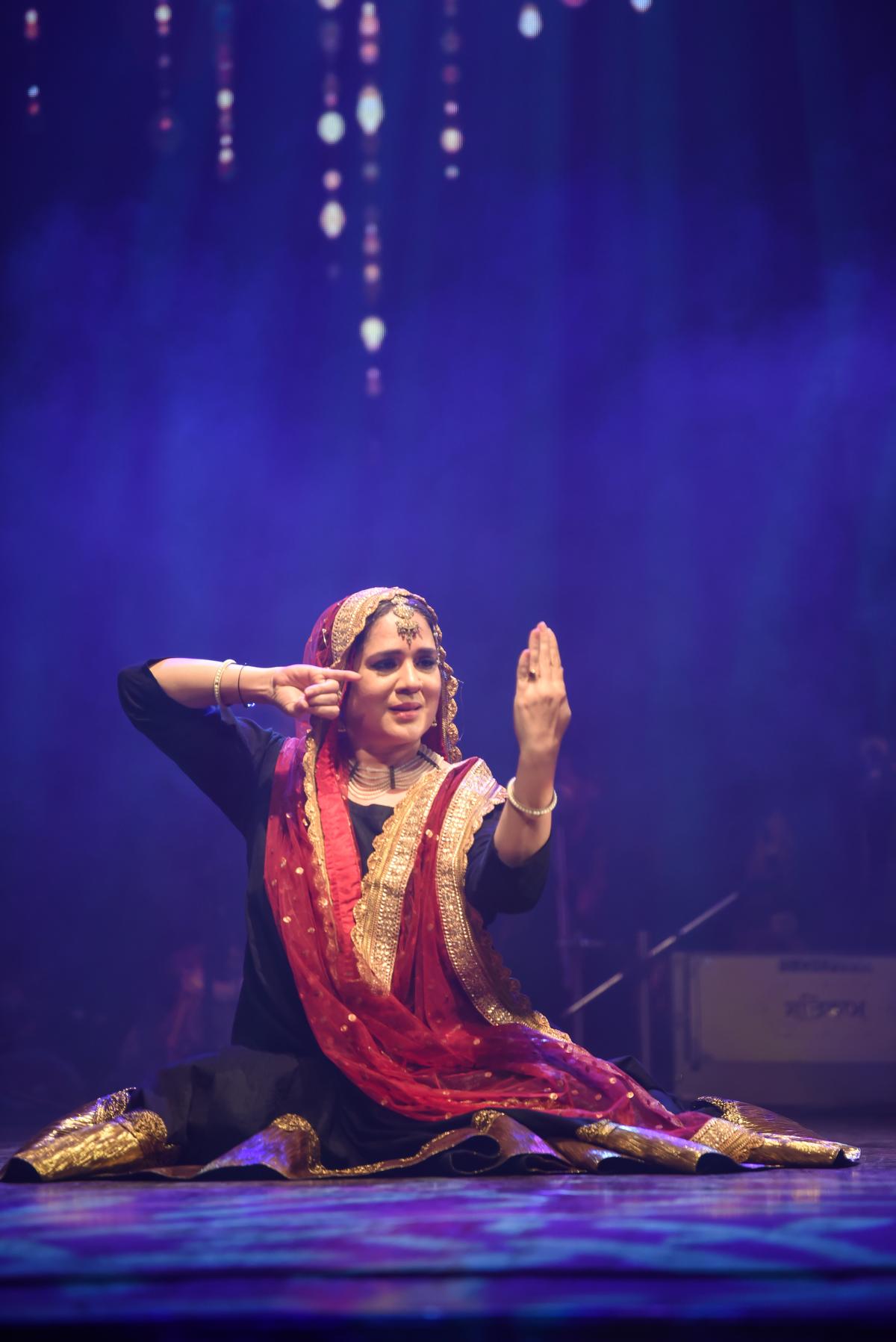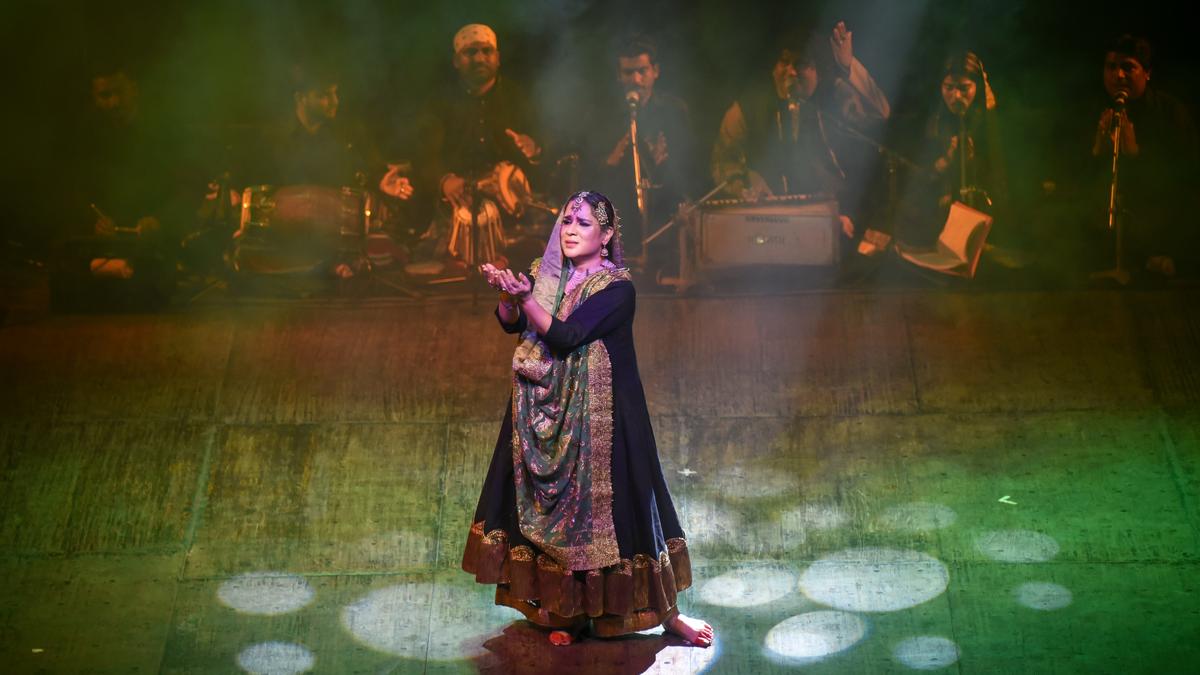Manjari Chaturvedi doesn’t slot life in boxes and binaries. The Sufi Kathak exponent who will soon release a book on qawwalis prefers to dance gracefully in the greys. She lives in a world where Bhakti and Raskhan exist in harmony. Where Hindus and Muslims throng the same shrine to play Holi. Where hit songs like ‘Dama Dam Mast Qalandar’ bring together in their embrace Lal Shahbaz Qalandar and Jhulelal, one a Sufi mystic, the other a Hindu deity.
The daughter of a space scientist father and Hindi literature scholar mother, she grew up in and was deeply influenced by Lucknow. “Sufi, Kathak, qawwalis, tawaifs had a big impact on me,” she says. “You imbibe it even if it’s not taught to you in textbooks.” Even as Uttar Pradesh labours furiously to crush its syncretic history, Chaturvedi says the small pockets of musicians she visits still inhabit that old world where Lord Krishna “effortlessly traverses Hinduism and Sufism”.
Her introduction to Qawwali music was in 1994 via film director Muzaffar Ali, who had attended one of her performances. Ali took her, a Kathak dancer trained in the strictest traditions of the classical form, to Sufi shrine Dewa Sharif near Lucknow. “I had never heard anything like this. I started listening to the music,” says Chaturvedi.

Manjari Chaturvedi says she likes to merge social issues with the arts.
Spinning like the dervishes
Over the next few years, Chaturvedi went down the rabbit hole the old-fashioned way — poring over manuscripts in libraries and on a trip to central Asia, a key centre of Sufism since the medieval age. In 1998, she launched Sufi Kathak as a dance form. She danced in black or white costumes, steering clear of the brighter colours preferred by classical dancers.
Her music and dance no longer paid homage to a god with form; devotion was all about feeling. Kathak’s chakras (spins) had showcased her technical expertise but in Sufi Kathak, she says, these became a “moving meditation modelled on dervishes”. The press was kind but her contemporaries and dance gurus hated the idea of a classical dancer performing to folk music. One guru staged a walkout halfway through her performance.
When Chaturvedi tried to conduct her first seminar on Qawwali 12 years ago, she couldn’t find any speakers initially. The seventh edition of the seminar, likely the last, is scheduled for November 1 this year, and has a packed schedule of talks, a photo exhibition, her book release and more.
Stories and self-documenting
Chaturvedi is a repository of Qawwali trivia. Hindi cinema has copied many qawwalis sung in Sufi shrines across the country but there’s only one instance of a filmi qawwali being sung regularly at a shrine, she tells me. Kaifi Azmi’s ‘Maula Salim Chishti’ from Garm Hawa (1974) is often sung at the Salim Chishti Dargah in Fatehpur Sikri.
Her new book, Qawwali: The Call Of Hearts In Love, tracks the 700-year history of the art form, from Amir Khusro to the experience of listening to qawwali in Delhi’s bars. The work began 14 years ago after Chaturvedi realised that there was no archive of all this musical richness. “Qawwals are mostly illiterate, marginalised musicians, never considered at par with classical singers,” she says. “Even their own community doesn’t see them as custodians of tradition and history.”
Chaturvedi began The Qawwali Project, an initiative to archive and preserve Qawwali through its practitioners, including the powerful self-documentation initiative ‘I Am a Qawwal’ that allows qawwals to tell their stories in their own words.
“I usually merge social issues with the arts so it takes a long time to find sponsors,” she says, adding that her book was produced largely due to her own work and the efforts of two photographers, Dinesh Khanna and Mustafa Quraishi. Thanks to sound history collector Amar Nath Sharma, she found a treasure of records by women qawwals.
Erasure of the ‘tawaif’
Chaturvedi’s work drew the country’s qawwals to her. Soon she was connected to many groups in the country, fighting to take them on cultural tours. That’s how Wajahat Hussain Badayuni performed at the Royal Festival Hall in London and Hyder Baksh Warsi went to Portugal. She set up a foundation that helps with small needs like medical support and years later, during COVID-19, the system came handy. “I’ve become everyone’s didi [elder sister],” she says. “They call me for anything, including filling out visa forms.”
This year’s Qawwali seminar will be her last, says Chaturvedi. “It’s been 14 years of discussions and conversations around Qawwali.” She now wants to focus on another passion project, one that began even before her work on Qawwali. It is about how history has misrepresented the region’s courtesans. “Tawaifs were deliberately removed from performance art history in the post-Independence era by cultural guardians,” she says.
“The idea that the tawaif was waiting for salvation by marriage and to turn into a ‘good woman’ was fed to us by Hindi cinema,” says Chaturvedi, adding that in her research she found letters written by tawaifs who said they didn’t have any desire to marry.
“I don’t want to be part of someone’s harem,” one woman wrote. “I teach, I dance. I’m happy.” Chaturvedi will ensure we hear their voices, too.
The writer is a Bengaluru-based journalist and the co-founder of India Love Project on Instagram.
Published – October 23, 2025 03:22 pm IST


